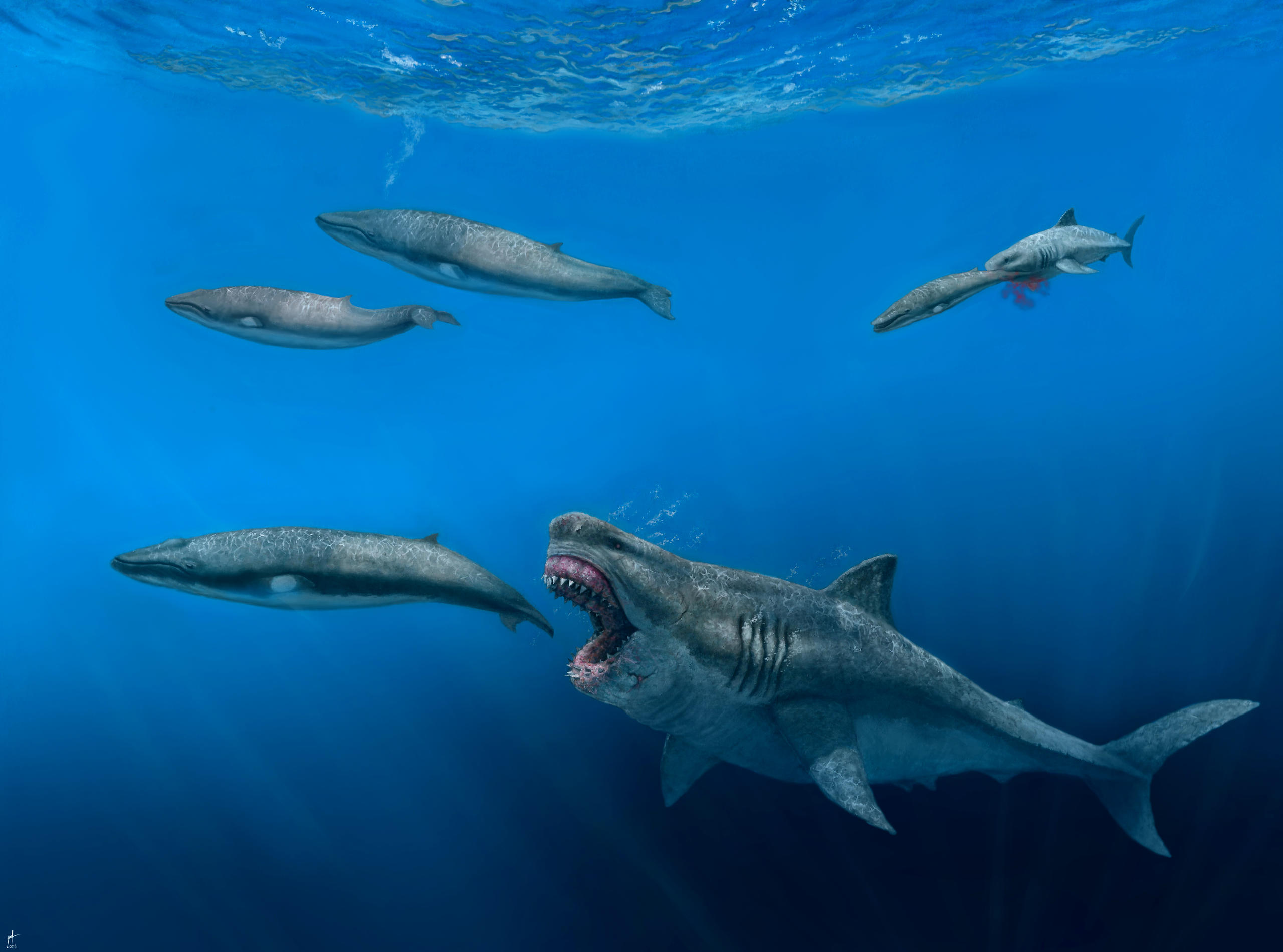
Giant megalodon shark could eat prey the size of killer whales

The megalodon, a giant shark that roamed the oceans millions of years ago, is famous for its teeth the size of a human fist. Otherwise, however, little fossil evidence exists. Scientists in Zurich have now helped create a 3D computer model of its entire body.
Work by international researchers in collaboration with the University of Zurich using an exceptionally preserved specimen suggests that the megalodon could fully consume prey the size of today’s killer whales and then roam the seas without more food for two months.
The megadolon (Otodus megalodon) was 16 metres long – two to three times the size of today’s great white shark – and weighed over 61 tonnes, the University of Zurich said in a statementExternal link on Wednesday.
Its gaping jaw, which it could open to almost two metres wide, and stomach volume of almost 10,000 litres allowed it to feed on other big creatures and satisfy its need for more than 98,000 kilocalories a day, according to the research, published in the journal Science AdvancesExternal link.
The megalodon, which lived an estimated 23 million to 2.6 million years ago, was also a strong swimmer: its average cruising speed was faster than sharks today and it could have migrated across multiple oceans with ease.
“These results suggest that this giant shark was a trans-oceanic super-apex predator,” says Catalina Pimiento, professor at the University of Zurich and senior author of the study.
“The extinction of this iconic giant shark likely impacted global nutrient transport and released large cetaceans from a strong predatory pressure.”
Few fossils
Pimiento said it had been difficult for scientists to get a clear picture of the megalodon since the skeleton is made of soft cartilage that doesn’t fossilise well.
So the scientists used what few fossils are available, including a rare collection of vertebrae kept at a museum in Belgium. Against all odds, a sizeable portion of its vertebral column was left behind in the fossil record after the creature died in the Miocene oceans of Belgium about 18 million years ago.
The research team, which includes researchers from Switzerland, the UK, the US, Australia and South Africa, first measured and scanned every single vertebra, before reconstructing the entire column. They then attached the column to a 3D scan of a megalodon’s teeth from the United States. They completed the model by adding “flesh” around the skeleton using a 3D-scan of the body of a great white shark from South Africa.
The complete model can now be used as a basis for future reconstructions and further research, the University of Zurich said.
“The novel biological inferences drawn from this study represent a leap in our knowledge of this singular super predator and help to better understand the ecological function that megafaunal species play in marine ecosystems, and the large-scale consequences of their extinction.”

More
The Swiss shark whisperer

In compliance with the JTI standards
More: SWI swissinfo.ch certified by the Journalism Trust Initiative




























You can find an overview of ongoing debates with our journalists here . Please join us!
If you want to start a conversation about a topic raised in this article or want to report factual errors, email us at english@swissinfo.ch.